Your cart is currently empty!
Shopping Havens of ancient China
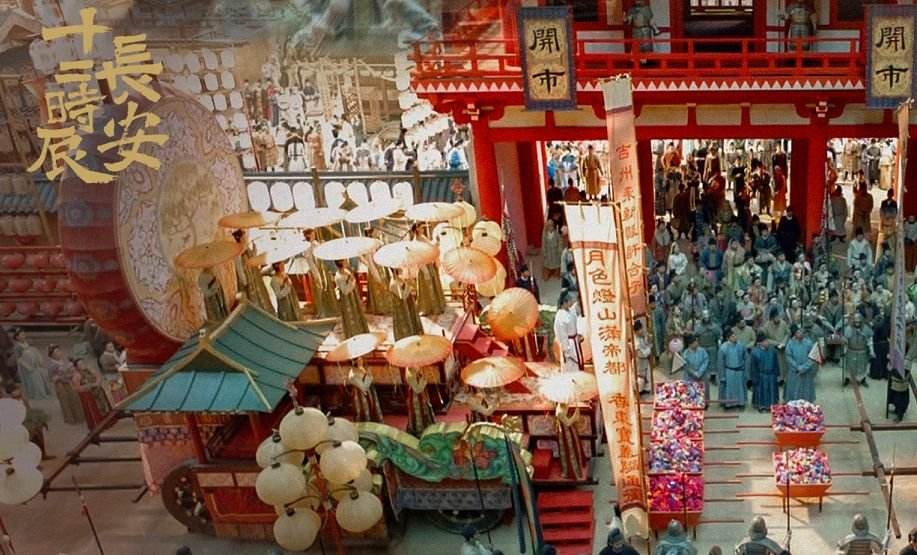
Discover the Vibrant Shopping Legacy of Chang’An: A Journey Through Time!
When you think of Singapore, the image of a shopping paradise often comes to mind—a delightful blend of East and West, with a culinary scene to match. But did you know that the spirit of diversity and vibrant commerce flourished long ago in the ancient capital of Chang’An during the Tang dynasty? In fact, the bustling markets of Chang’An may have outshone even our modern shopping experiences, despite the strict controls of the central government (any similarity is purely coincidental, but history tends to repeat itself).

As the festive season approaches, you might be gearing up to shop until your heart’s content (and perhaps your wallet’s dismay). But have you ever wondered what shopping looked like in the past? Forget the casual street peddlers of period dramas; the real story of ancient Chinese marketplaces is far more fascinating!
Not too far from the fact but such casual shopping experience at random places would’ve only been possible after the onset of Song dynasty (10th century onwards) where there was a lot more free economy. Prior to that, shopping was a very controlled experience with designated, gated locations with uniform opening and closing timing.

The Evolution of Shopping: From Controlled Markets to Bustling Bazaars
Before the freewheeling days of the Song dynasty (10th century onwards), shopping in China was a tightly regulated affair. Markets were not just random places to buy goods; they were carefully curated events held at designated locations, with strict opening hours.
Interestingly, the term “Bazaar” has roots in ancient Persia, evoking a sense of exoticism that even the Tang dynasty (7th—10th century) shared. The Tang people were insatiably curious about foreign goods, welcoming influences from the West and making their markets a cultural melting pot.
Since I’m preparing for an end of year Ganji Bazaar that fuses the old with the new, the past with the modern, the East with the West, I thought it would be important to go back to the origin of bazaars and marketplaces, and their functions and importance in the Chinese societies.
A Glimpse Into the Past: Where Did They Shop?
In ancient China, shopping was often tied to the seasons. Festive markets (festive seasons or special harvest seasons, themed markets for each month) and fixed-date gatherings (every 1st and 15th of the agriculture month) were commonplace, but in central areas, permanent markets operated year-round, much like today’s shopping malls.
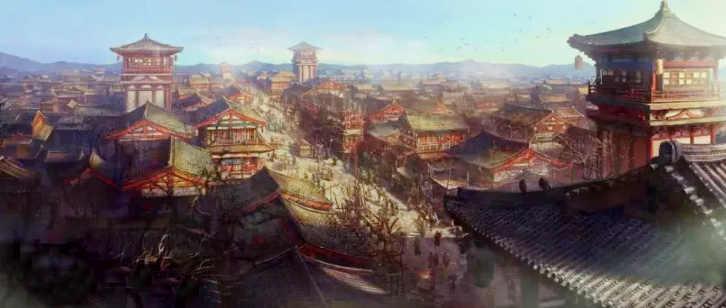
The Chinese term that’s often used to describe the markets and shoppings, especially seasonal or fixed date is Ganji 赶集 (literally: rushing to a gathering). This trade-centric gathering stands in complete opposite to Yaji 雅集 (literally: elegant gathering) which was enjoyed by the literati, like a collectors’ gathering, where different artworks in their collection are being exchanged for opinions and compliments, and newly composed poems and literary works were being circulated for review.
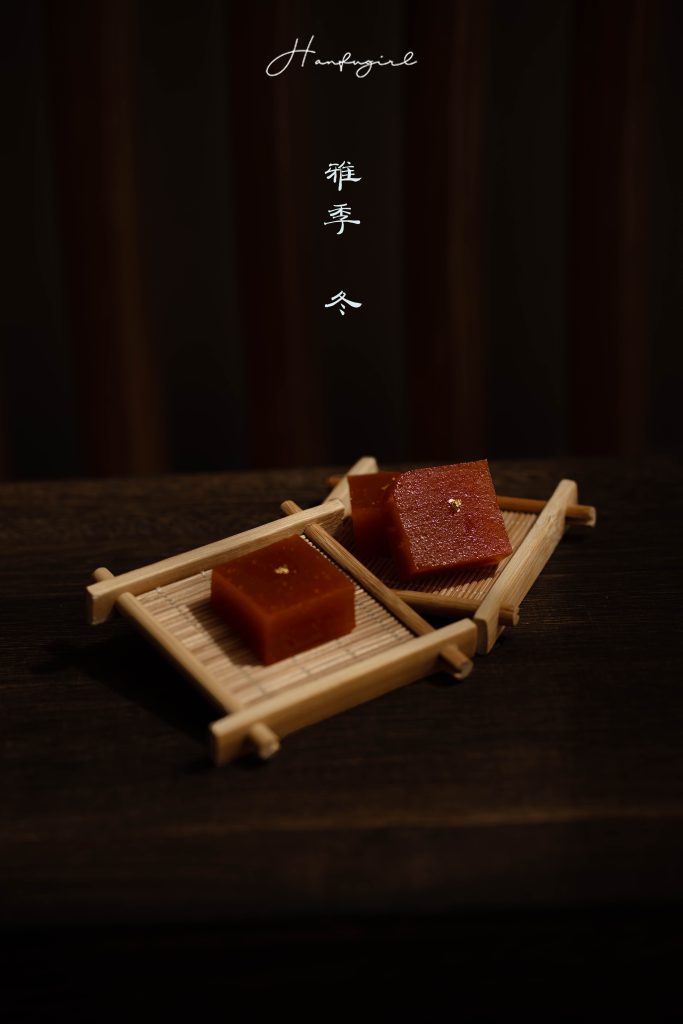
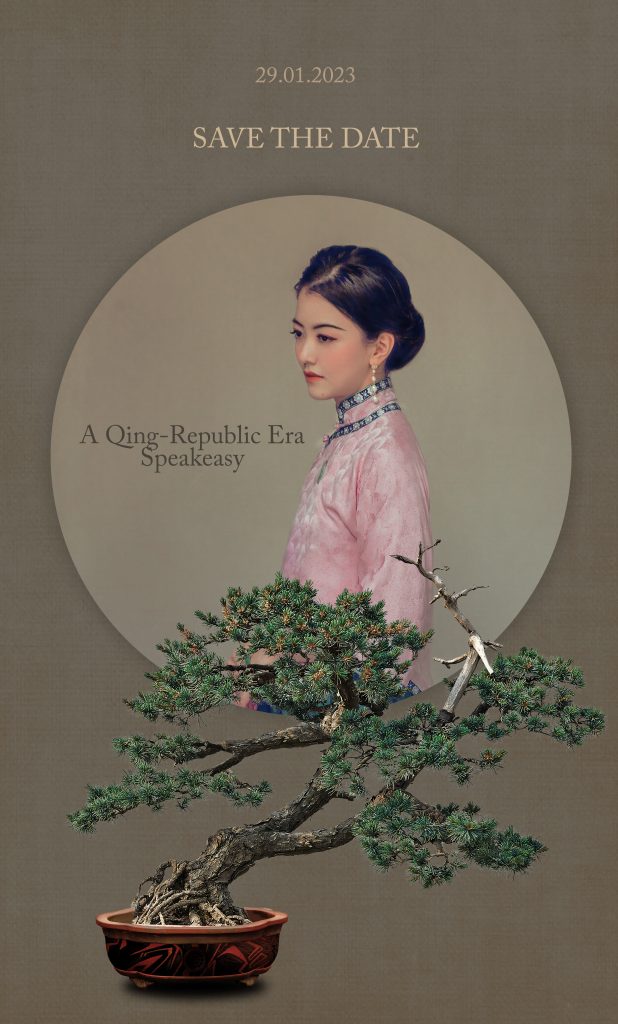
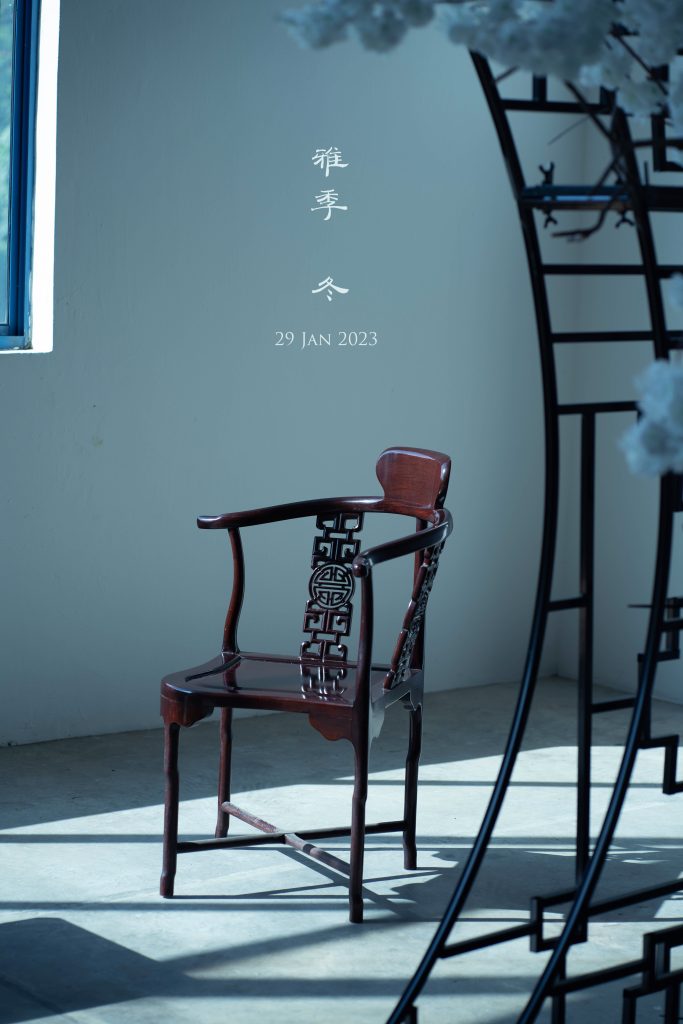

What’s in a name?
Word on the street is that the Chinese term “Buying Something” (买东西 literally translating Buying East and West) came from the East and West Bazaar marketplace (东市与西市)of the Tang dynasty set in the 7th century. But the East and West bazaars of Tang capital Chang’An had an even more distant history that dated to about 2,000 years ago.
WHERE DID THEY SHOP?
Han Dynasty’s Shopping Paradise
During the Han dynasty, the East and West Markets of Chang’An stood out among nine vibrant marketplaces. This Chang’An is actually a different location from the Tang dynasty Chang’An though they share the same name, I know.. confusing…
The East Market, established in 201 BCE, was a luxurious hub sprawling over 71 football fields (over 0.52km², about the same size as Singapore’s Marina Bay Sands entire area of 0.57km²).
Its counterpart, the West Market, was much smaller at about 0.25km². The markets would’ve been scattered around the main capital so people from different neighbourhoods could have easy access, pretty much like how our heartland neighbourhood malls are.
Fast forward to the Tang dynasty, and the scale of these markets skyrocketed!
TANG PEOPLE MUST’VE BEEN MAJOR SHOPAHOLICS
There was just a population of about 900,000 (1/6th of Singapore) in the Tang capital Chang’An. and they have 2 orchard roads worth of shopping!
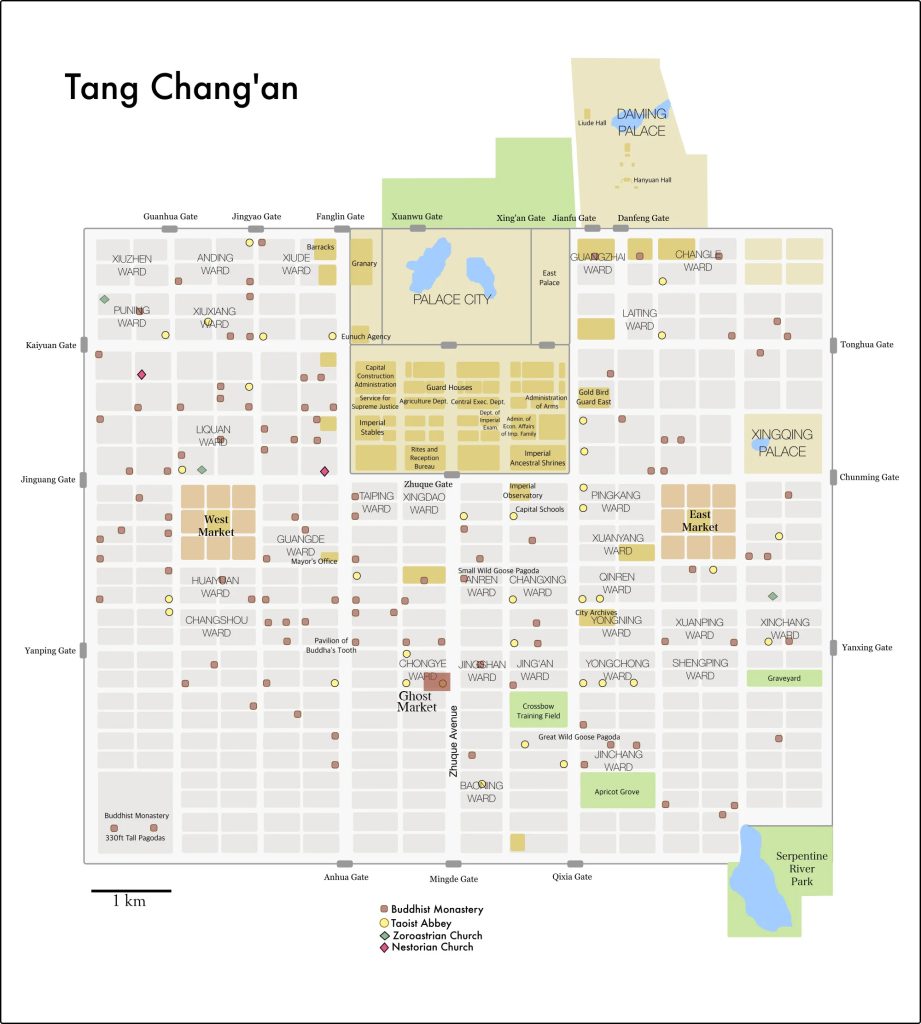
East Market = Orchard Road of Chang’An
The East Market, likened to Singapore’s Orchard Road, boasted over 50,000 shops filled with high-end goods, all nestled beside the imperial palace, imperial exam location and residences of high-level officials. This wasn’t just shopping; it was a luxurious lifestyle.
The entire East Market measured about 1000m X 924m (about 0.92km², almost doubling that of the Han dynasty and about the same size as the Orchard Road district) with its main street spanning 30m wide!
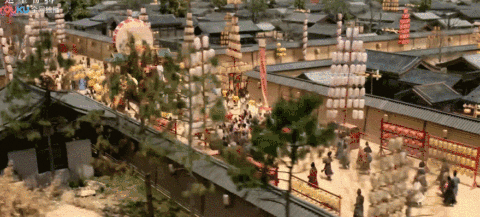
Due to the luxury positioning of the East Market, it was also less crowded and more quiet, offering a truly luxurious experience to its high-end customers.
The aristocratic family or Crazy Rich Tangs (not necessarily having to have official rank) would take turns to host parties in the East Market F&B shops. So yes, definitely very chi-chi.
West Market = The Gold Market of Western curiosities
Conversely, the West Market transformed into the Gold Market—a bustling haven for exotic foreign wares, from vibrant textiles to dazzling trinkets. Imagine a chaotic, lively space where street performers and merchants from afar converged, creating a vibrant tapestry of sights and sounds.
With a comparable size of 1031m X 927m (slightly bigger than the East Market at 0.94km²) it was 4x that of the Han dynasty’s West Market.
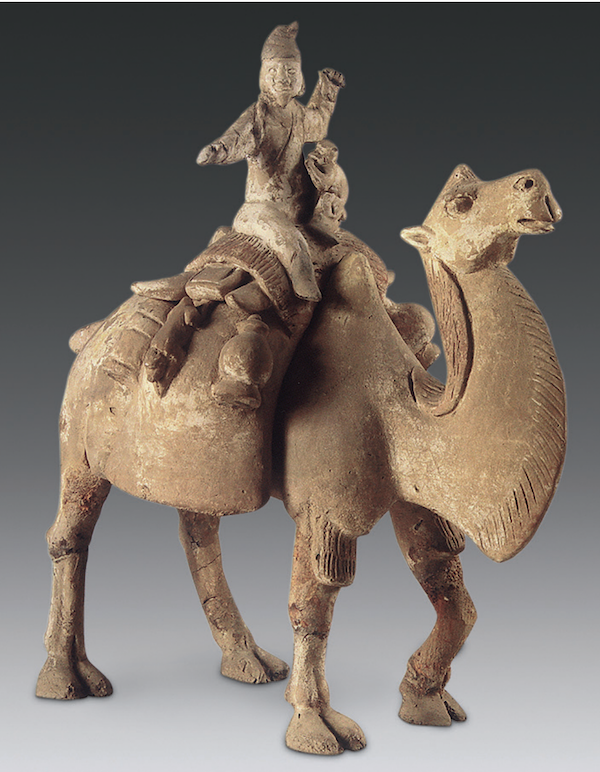
The unique selling point of West Market is not in its luxurious ambience (cos it’s not positioned as such), but its diverse foreign goods and offerings of diverse experiences. As the West market is located nearest to where the Western merchants would enter the city, it would naturally be where they offload their goods.
You can also see in the map above that the West side has a lot more foreign religious buildings like the Nestorian and Zoroastrian churches.

Why Gold Market? It’s not that they traded gold(because gold wasn’t a tradable commodity or currency unlike what period dramas would like for you to think). They were just extremely prosperous and exceeded even the glory of the East Market with their vibrant exotic foreign goods and traders from the west (West = Central/West Asia) especially because the Tang people adored western fashion and goods.
For a moment, I thought I’m writing about the present China. lol

Without the burden of luxury, West Market could afford to be a lot more chaotic/vibrant. There were many street performers, pipa players, western musicians and dancers, bars and weapon shops, you name it. It’s like the street buskers along Orchard, but X 10,000 (a random number here to indicate large quantity and vibrancy).
If you were looking for fun, then West Market was the place!
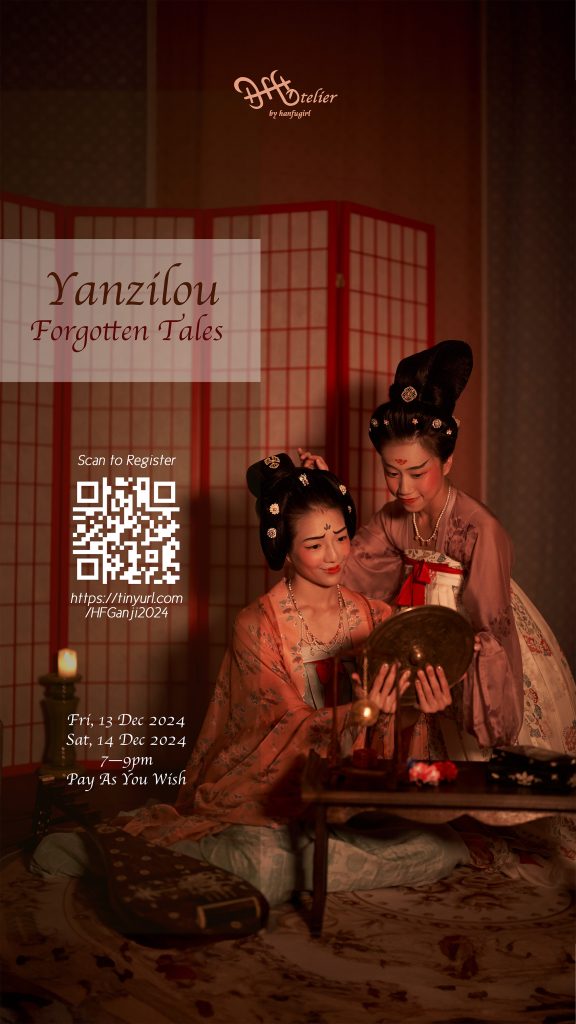
The Mysterious Ghost Market = Pasar Malam (night peddler market) of Tang
Then, comes the hush hush ghost market.
And then, there’s the infamous Ghost Market, a secretive nocturnal bazaar thriving under the cover of darkness. Despite strict curfews, traders and the adventurous could find hidden treasures and tales of ghosts mingling in the shadows.
We might take night markets for granted in today’s society, but during the 7th-10th century in Tang dynasty’s capital, there were strict night curfews. So people couldn’t just get out of their neighbourhood quarters to shop at the markets.
And so, there existed a “Ghost Market”, situated near a Taoist Abbey. Historically, homeless people and traders would often trade there at random hours and nights (no regular date and time to avoid detection). There would often be tales of ghost sightings, or ghostly sound in the area, deterring normal folks from visiting the area.
There were also random pop-up night markets around other neighbourhood quarters, and they were mainly small peddlers who lit a small lamp and started selling their stuff at night. People nestling in the comforts of their homes at night would think of the sound the night peddlers made after dark as that of ghosts passing by or loitering in the area.

This enchanting market lives on in modern-day Beijing, reminding us of its rich history. It used to be trading around 3am, selling mainly antiques.
I am actually in the midst of planning a study trip to Beijing in Autumn next year, so if anyone’s interested you can keep a look out! I will be working with long-time experts who have retired from the Palace Museum of Beijing, and other history and cultural experts from China to conduct part of the study course there!
Experience the Ganji Bazaar: Shop Like the Tangs This Festive Season!
This year, as we prepare for our end-of-year Ganji Bazaar, we’re blending the old with the new. Say goodbye to the traditional Yaji gatherings and embrace the thrill of discovery!
From exquisite kimonos and silk embroidery to handcrafted accessories and repurposed textiles, our bazaar offers a treasure trove of cultural and historical wonders.
Mark your calendars for this unique shopping experience! Stay tuned for more details—your journey through time awaits!

